Expert Series: Dr Rishi Kotecha on paediatric ALL
Dr Rishi Kotecha is a consultant paediatric haematologist and oncologist at Perth Children’s Hospital, Head of the Leukaemia Translational Research pre-clinical research program at the Telethon Kids Institute in Perth, and the Clinical Lead for Paediatric Leukaemia and Lymphoma for Western Australia. He went to medical school in the UK, came out to Australia for a year in 2003, got a job at the children’s hospital in Perth and has been there ever since. His lab-based PhD (2010-2014) in paediatric leukaemia paved the way for his special interest in babies with leukaemia. He is also on the Blood Cancer Taskforce.
Immunotherapy is a new arm of treatment that’s evolved over the last decade and is revolutionising outcomes for acute lymphoblastic leukaemia (ALL) according to paediatric leukaemia specialist, Dr Rishi Kotecha.
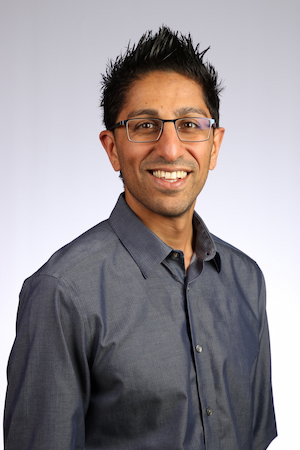
And he believes ensuring access to this therapy across Australia is the greatest unmet need in the patient group he mainly works with; newborns through to 18 years of age.
About acute lymphoblastic leukaemia – types and prognosis
ALL is the most common childhood cancer and Dr Kotecha said age is one of many risk factors that influences outcome in paediatric ALL.
“If you’re between one to nine years of age at diagnosis, that’s the best group to be in, in terms of age,” said Dr Kotecha.
“If you’re less than one-year-old, that’s the worst age group in terms of outcome, and if you’re 10 years or older, that’s another age group that has an inferior prognosis.”
The genetic features of the leukaemia cells, known as the blast genotype, is another factor which can influence outcome, especially for patients with pre-B-ALL, he explained.
“Standard risk pre-B-ALL has a very good outcome in children with over 90% five-year survival.”
T-ALL has a survival outcome of around 85%, and for those diagnosed at under one year of age with pre-B-ALL with the KMT2A (or MLL) gene rearrangement, survival is less than 50%.
But “the key thing”, according to Dr Kotecha, is that ALL has very good outcomes for patients over the age of one.
“We’re looking to cure your child, but we have to go through a journey to get there.”
“Using the state-of-the-art care available in Australia, we go on this journey with you to ensure your child has a successful outcome and subsequently leads a happy life,” said Dr Kotecha.
“When a patient presents with ALL, I always say to the family… ‘the first month is a bit of a jigsaw puzzle’.
“We need lots of pieces of the jigsaw puzzle before we can determine your child’s prognosis and the treatment we’ll give your child.
“If there are features associated with poor outcomes, we have to give more intensive treatment to eradicate and keep the leukaemia cells away and the prognosis is not as good as if you have lots of good risk features, in which case we can back off a little on the intensity of the treatment.
“The most important factor for prognosis is how well your child responds to therapy.”
“Once we give the first four weeks of therapy–known as induction chemotherapy–your child’s response is critical to guide subsequent treatment and prognosis,” said Dr Kotecha.
“We do a bone marrow biopsy at diagnosis, and we know there will be lots and lots of leukaemia cells in the bone marrow. Then we do a bone marrow at four weeks, after the first round of treatment, and what we hope is that there are no leukaemia cells present.
“Nowadays, we can detect really, really low levels of disease, known as minimal residual disease, using our specialised techniques and equipment.”
Dr Kotecha said the main difference between how you treat ALL in children, compared to adults with ALL, is that children are given more intensive chemotherapy, for two reasons.
Children’s bodies can tolerate more intensive chemotherapy because they generally don’t have any associated comorbidities.
“They just have their cancer, so we can push the chemotherapy hard to try and achieve a cure,” said Dr Kotecha.
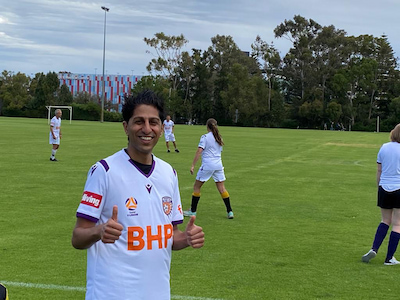
Elderly adults tend to have a lot of other problems–heart disease, kidney disease and other illnesses–so they can’t tolerate intensive treatment as well.
Secondly, due to the smaller number of paediatric patients in comparison to adults with blood cancer, Dr Kotecha said more children can be treated as inpatients and kept in hospital for extended periods of time while they receive the intensive chemotherapy because when their blood counts “bottom out, they are very vulnerable to infection”.
“We are able to keep the most vulnerable children in hospital so we can pounce on them as soon as they get any signs of infection and treat them with antibiotics or protect them with extremely good supportive care in the inpatient setting.”
“We’re able to give a boutique service to every single one of our patients.”
Dr Kotecha said his adult colleagues have started to treat their young adults with ALL in a similar way, intensifying their treatments for patients in the 18 to 40 age group who also don’t tend to have many other coexisting illnesses.
Access to CAR T-cell therapy for ALL
In Australia, many sites have started immunotherapy programs and treatments.
“We need to ensure we’re at the forefront, so we can deliver these therapies in a timely fashion,” said Dr Kotecha.
“America and parts of Europe are very advanced and have access to these treatments,” said Dr Kotecha.
“We’re not behind in Australia, but CAR T-cell therapy, which is a relatively novel technology for ALL and represents an amazing treatment strategy, needs the infrastructure behind it–not just the treatment itself, but facilities and resourcing–to ensure every major centre is able to deliver this therapy.”
The Royal Children’s Hospital Melbourne was the first Australian site to deliver CAR T-cell therapy for paediatrics as part of an international clinical trial. Now this treatment is commercially available at three sites–Royal Children’s Hospital in Melbourne, Sydney Children’s Hospital in Randwick, and Queensland Children’s Hospital in Brisbane.
“We hope to get every major centre in Australia accredited and up-and-running for CAR T-cell therapy,” said Dr Kotecha.
“It can be a difficult therapy to give, so each hospital needs to have the resourcing, facilities and accreditation to deliver the therapy.
“Last year, our first site in WA, the Fiona Stanley Hospital was accredited to deliver CAR T-cell therapy to adults.
“It’s becoming standard practice for children will ALL to receive CAR T-cells in the setting of a second or greater relapse or relapse post-transplant,” said Dr Kotecha.
“Unfortunately, if our patients are aged under 16, they have to go to the eastern states for CAR T-cell therapy.
“To date, we have sent four paediatric patients interstate. They had to stay out of their home environment and home city for prolonged periods of time, while their cells were collected, manufactured, then re-infused.”
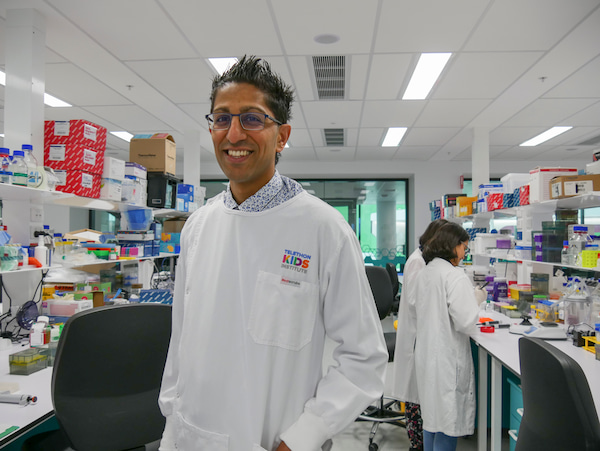
This involves several trips back and forth from Perth to Melbourne, Sydney, or Brisbane over three to four months, beginning with going east to have their T-cells collected (one-two weeks). They return to Perth for four to six weeks while their T-cells are manufactured, before going back across the country for the reinfusion.
“That’s a three- to four-week stay because they have some treatment before the reinfusion, then afterwards they stay over east to make sure they’re safe and don’t develop any side effects,” said Dr Kotecha.
“Initially, CAR T-cells were delivered to children who were over three years of age.”
However, delivering CAR T-cell therapy to younger children, including babies, is now possible but it is more difficult as it can be hard to harvest their T-cells.
Another of Dr Kotecha’s patients, his youngest to be given CAR T-cells, was an infant who was 19 months of age at the time the CAR T-cells were delivered.
“She was diagnosed at 36 days of life, on my watch, and was a very sick baby with leukaemia,” he said.
“We sent her to Seattle in 2019, because the CAR T-cell program wasn’t open in Australia at the time.
“We initially treated her with very intensive chemotherapy, then she went to the U.S. for CAR T-cell therapy. She then came back to Australia for an allogeneic stem cell transplant and is doing very well now, so it’s great news.
“I actually saw her last week and she’s over three years old now.”
So why did she have a transplant as well?
“We still don’t know whether CAR T-cells are a definitive treatment. In some patients, it leads to a cure without the need for any further treatment, whereas others relapse at some point after CAR T-cell therapy.
“In some patients, having CAR T-cells is what we call a’ bridge to transplant’. In these very high-risk patients, including babies, we think that if we didn’t transplant them after getting CAR T-cells, they’re very likely to relapse.”
Research to improve outcomes for babies and children with high-risk leukaemia
Dr Kotecha heads the Leukaemia Translational Research laboratory based at the Telethon Kids Institute which is co-located with Perth Children’s Hospital.
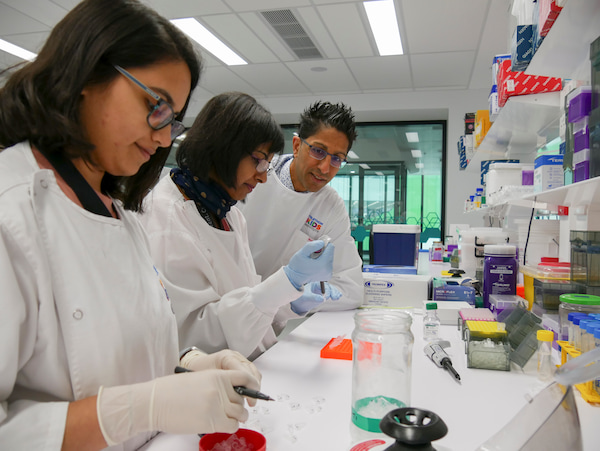
The overarching aim of his research program is to improve outcomes for all children with high-risk leukaemia and that includes preventing the long-term complications that occur from giving these young patients very toxic treatments.
Three post-doctoral researchers are among the 10 staff in his lab and Dr Kotecha currently also supervises four PhD students. His group looks at all types of high-risk leukaemias; T-ALL, AML, and subtypes of pre-B-ALL that have inferior outcomes such as Philadelphia chromosome ALL. But infant ALL is the subtype Dr Kotecha has been most involved with internationally.
“My special interest is in babies because that’s was the focus of my PhD and a lot of my lab research has been on babies with leukaemia,” said Dr Kotecha.
“To discover a therapy in my lab that we can translate to the clinical sphere and that will have a meaningful outcome for children with leukaemia… that would be the holy grail for me. A meaningful outcome could either be an improvement in survival rates or a reduction in the side-effects that these children suffer from.”
Current and proposed clinical trials in ALL
“The beauty of paediatric oncology is… I know every paediatric oncologist in Australia and New Zealand because we’re a small population of oncologists,” said Dr Kotecha.
“We all work together under the umbrella of the Australian and New Zealand Children’s Oncology Group (ANZCHOG) and it’s a very collaborative group.
“We have meetings for our various tumour subspecialties, such as for the ANZCHOG Leukaemia-Lymphoma Group, and regular monthly video conferences to discuss difficult cases and obtain consensus expert advice from everyone in Australia and New Zealand regarding the best options for treatment.”
In addition to such national collaboration, Dr Kotecha has been involved in many international clinical trials looking at improving the outcomes for infants with leukaemia.
“Because paediatric cancers are generally rare diseases, we all have to work collaboratively,” said Dr Kotecha.
“A few collaborative groups operate worldwide and we’re fortunate to be part of the Children’s Oncology Group (COG)–the world’s largest organisation devoted exclusively to paediatric cancer research.
“We treat our patients with the same protocols and most centres in Canada, North America, Australia, and New Zealand are part of it. This means our patients in Perth are being treated exactly the same as a patient in New York, Washington, Toronto, Auckland or Brisbane.
“It’s very standardised and that’s the only way we can improve outcomes… by putting patients on these clinical trials and getting the numbers to ensure that we compare the standard therapy to a new or experimental therapy.
“In paediatric ALL, we always build on the most successful arm of the previous trial, often adding a new investigational agent into the mix for the next trial.”
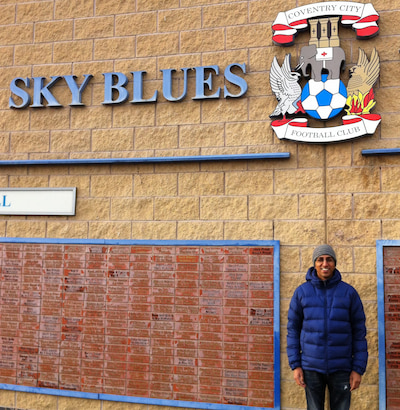
This is the gold standard treatment and currently it’s very immunotherapy focused.
Blinatumomab (Blincyto®), a type of immunotherapy that’s a bi-specific T-cell engager, has shown benefit when used instead of intensive chemotherapy for children with relapsed ALL.
“The outcomes were better and there was less toxicity as well, so what we’re doing now is adding blinatumomab into treatment for standard risk ALL in a trial which looks very exciting and promising,” said Dr Kotecha.
“Patients get randomised to having either chemotherapy alone, or the same chemotherapy backbone plus blinatumomab to see if that will improve the outcome.
“And there’s also a trial for high-risk ALL, looking at another type of immunotherapy, inotuzumab.
“It’s a similar concept, looking at whether we can improve the outcome for these high-risk patients by adding inotuzumab to their standard chemotherapy backbone versus patients who just get the standard chemotherapy.”
Dr Kotecha said another trial, for infants, through the European-based Interfant consortium is also looking at the addition of blinatumomab to the intensive chemotherapy backbone that is used to treat infants with ALL.
He is also about to co-chair the next international trial, through the COG for infant ALL, which will look at the addition of venetoclax (Venclexta®) to the intensive infant ALL chemotherapy backbone. Venetoclax was developed in Melbourne and this new trial will be the first time the drug is trialled in babies.
This proposed study is going through approvals with various U.S.-based regulatory agencies and Dr Kotecha said he expects it to open in 2022 at the COG sites in Australia and New Zealand.
“It’s very exciting that a drug discovered in Australia, and which is being used internationally for many cancer types, is now going to be tested in the very young population.”
If the current blinatumomab trial, and the proposed venetoclax trial “both come out as winners, then we might be able to think about whether we look at using both of them together in the infant population”, said Dr Kotecha.
More than 90% of children with ALL are on clinical trials
Dr Kotecha said the number of children who participate in a clinical trial when one is offered is very high; over 90%.
“If there is an open trial available, pretty much all our patients, regardless of cancer type, consent to enrol,” he said.
“In paediatrics, we’re very lucky that we have uniform clinical trials run by the collaborative groups and every time a new trial opens, we generally have access to it.
“The benefit is that clinical trials aim to improve treatment and outcomes, so most patients who are offered trials, go on trials if there’s one available,” said Dr Kotecha who’s only had one or two of his patients choose not to be part of a trial.
“It’s considered best practice within paediatric oncology to be part of a clinical trial.
“Trial participants have the opportunity to receive an investigational agent or a new treatment schema that has the potential to improve their outcome.
“There’s a lot of rigour that goes into designing these studies, so parents often feel safe and comfortable that all of the background information and a lot of preclinical studies have already been performed before their child is treated.
“In paediatrics, a lot of the novel agents have also already been investigated in adults, and many have been investigated for safety and tolerability within early phase studies in children before they are used in the upfront setting.
“In addition to randomised controlled trials, we have early phase studies open as well,” said Dr Kotecha.
“In the paediatric setting, a lot of the early phase clinical trials are in the relapsed/refractory setting where children, unfortunately, have had upfront therapy, they may have had relapse therapy, and then, unfortunately, have relapsed again.
“We have developed an early phase trials unit at Perth Children’s Hospital for patients who really don’t have much hope for a cure. Their parents want to try something new or different, and don’t want to leave any stone unturned before they consider the palliative route.”
Blood Cancer Taskforce
Dr Kotecha said the Blood Cancer Taskforce and the National Action Plan for Blood Cancer was “a really great initiative to get everyone together–researchers, clinicians, patient advocates and the community”.
“It provides a forum for us all to gather momentum and resourcing, so we can address the issues pertinent to the blood cancer community.
“The four main priorities identified by the National Strategic Action Plan for Blood Cancer are to empower patients and their families, accelerate research, enable access to novel and specialised therapies, and achieve best practice.
“We’ve taken the first step towards unifying everyone on the same page, so we can make sure every patient with blood cancer, regardless of whether they’re a child or an adult, can have equitable access to the best treatment, and that it’s something that’s done collaboratively and is all-inclusive.
“By gathering this group of people and in partnership with the government, we’re going to be able to make significant change going forward,” he said.
* Thanks to our supporters, the Leukaemia Foundation contributed to early work on the development of venetoclax, (formerly called ABT-199). This research was undertaken by Dr Kylie Mason, Professor Andrew Roberts, and collaborators at Walter and Eliza Hall Institute through the Leukaemia Foundation’s National Research Program Grants-in-Aid in 2010 and 2012.
Last updated on January 3rd, 2023
Developed by the Leukaemia Foundation in consultation with people living with a blood cancer, Leukaemia Foundation support staff, haematology nursing staff and/or Australian clinical haematologists. This content is provided for information purposes only and we urge you to always seek advice from a registered health care professional for diagnosis, treatment and answers to your medical questions, including the suitability of a particular therapy, service, product or treatment in your circumstances. The Leukaemia Foundation shall not bear any liability for any person relying on the materials contained on this website.